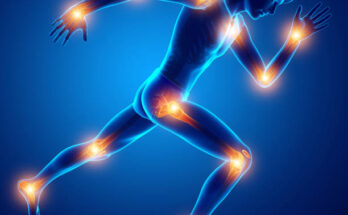Are you bothered by a stiff neck? If so, you are not by yourself. Many people at some point in their lives encounter neck muscle knots. This blog article will go over five methods for removing that annoying knot.
Let’s define a muscle knot first.
A knots in neck is a tiny, sensitive, hard region located within a muscle or set of muscles. It can feel lumpy or nodule-like and is typically brought on by overusing, tense, or lightly injured muscles. Although they can develop anywhere on the body, knots in the shoulders, neck, and lower back are the most frequent. Muscle knots are frequently uncomfortable, although they normally do not require medical attention. The discomfort could be a sign of a more serious issue if it is strong or chronic, and it might take longer to get better.
Neck muscle knots are prevalent and can be brought on by a variety of factors, such as bad posture habits, muscle exhaustion, or tight muscles. Headaches, neck pain, and muscular spasms can all be brought on by these unpleasant muscle knots. Although neck muscle knots typically disappear on their own in a few days, there are steps you may take to hasten the healing process. Use a heating pad or ice pack to minimise inflammation, massage the muscle knot with your fingers, and stretch the tight muscles to loosen them. After a few days, if the muscle knot is still giving you pain, you might need to see a doctor or physiotherapist for additional therapy.
What produces tense muscles?
Muscle knots, according to experts, are frequently caused by overuse or underuse. Your risk of having these delicate trigger points, however, can be increased by a number of variables.
Several typical reasons for muscular knots include:
Lifting large boxes or holding a phone between your ear and shoulder for extended periods of time are examples of actions that might cause repetitive strain or muscle overuse injuries.
Muscle underuse brought on by a sedentary way of life, extended sitting, or bed rest
poor posture, especially when spending a lot of time sitting without moving around
- Anxiety and tension
- Insufficient slumber
- Dehydration
- Vitamin deficits and inadequate nutrition
5 easy methods for releasing neck muscle knots
1) Use heat or ice
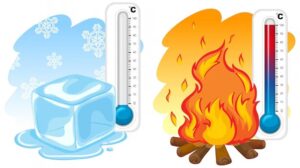
Heat therapy can promote blood flow and relax the surrounding muscles. Alternately, using ice can assist to lessen pain and inflammation. Choose the option that brings you the greatest relief for the best outcomes. Alternate heat and ice treatments many times each day if you do not see much of a difference.
2) Self-trigger point massage
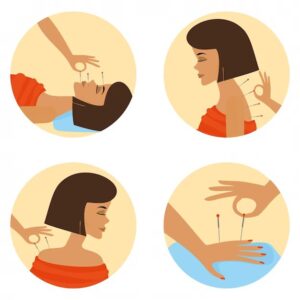
Traditional massage can ease muscle tightness, but it frequently falls short of curing the problem entirely. A specific sort of massage that targets muscle knots is known as trigger point therapy. Trigger point massage can help to release the tension in the muscles and increase range of motion by applying pressure to these knots. Trigger point massage can also aid in enhancing circulation, which can help to relieve tension. Therefore, a trigger point massage may be a useful method of releasing neck and shoulder muscle spasms.
3) Stretching the neck
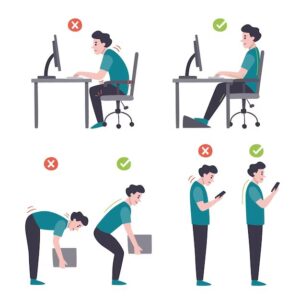
When coping with neck pain, performing neck stretches is an excellent approach to reduce stress, enhance local circulation, and address postural problems. Some often recommended stretches are listed below.
- To stretch your side neck, tilt your head to the side and tuck your ear against your shoulder. Apply light pressure to your head with the hand on the side you are stretching towards to lengthen the stretch.
- Chin tuck: Try to create a double chin by tucking your chin into your throat. Straight backward head motion is preferred; nodding or tilting the head is not acceptable. Hold for two to three seconds, then repeat.
4) Myofascial release technique.

These knots are the focus of a massage technique called myofascial release treatment. In order to relieve the muscle tension, the therapist will apply pressure to the knot. This can lessen discomfort and enhance range of motion. Myofascial release therapy can also aid in preventing future muscle knot formation. The therapist can aid in lengthening and loosening the muscle fibres by concentrating on the areas of tension. By doing so, the likelihood of the muscle contracting again in the future can be decreased.
5) Physiotherapy.
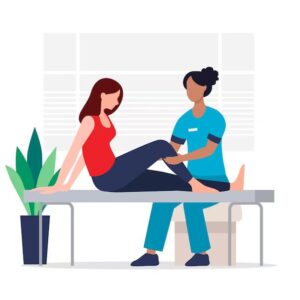
Muscle knots can be effectively relieved and kept from recurring with the use of physiotherapy. For the purpose of releasing the knots and enhancing range of motion, the therapist will employ a variety of methods, including massage and stretching. In order to help prevent the knots from reoccurring, the therapist may also give exercises and advice on good posture habits. Make an appointment with a physiotherapist right away if you are experiencing muscular knots. You will quickly feel better with their assistance.
Now that the muscle knot has been released, it’s critical to understand how to keep it from returning.
Treatment of Muscle Knots by Oneself
You should begin with massage therapy. Consider purchasing a foam roller that you may put directly over the trigger point if you are unable to book a therapeutic session. As long as you start with light pressure, you will not experience any pain. Regarding cold therapy, you can use ice packs as soon as you feel muscular knots, but if the trigger point has been hurting you for more than a few days, you should use warm compresses to relax the fibres and increase circulation.
The cobra pose in the aforementioned sun salutation yoga asana calls for a neck rotation stretch, which is helpful for easing neck muscle stiffness. You don’t need to perform the complete pose; instead, sit up straight and practise rolling and shrugging your shoulders before moving on to cervical rotations. Turn your head slowly to the left as far as it will go, maintain the position for a few seconds, and then use your right hand to lift your chin up for a full stretch. Repeat on the opposite side until your neck is no longer sore.
Tips for Happier Muscles:
- Find the knot in the muscle by pressing on the painful location. A muscle knot may be uncomfortable even without you being aware of it until you apply pressure on it.
- Rub the tight muscle to promote free circulation of blood and oxygen to that muscle location.
- Select the proper pressure. When you apply the “right amount of pressure” on a muscle knot, it might “hurt so good” that you may laugh and cry at the same time. But if you push too hard, you might beg for mercy!
- If you rub the muscle knot gently, you might feel soreness in the muscle and the knot as well.
Muscle knots can be avoided by adopting excellent posture habits and stretching and exercising regularly. Avoid any repetitive or demanding tasks that could put strain on your muscles. For instance, your neck muscles will become tense if you sit still for long periods of time. Don’t forget to take breaks from standing or moving around to sit down and relax your muscles. Finally, keeping your muscles strong and avoiding knots can be accomplished by drinking plenty of water and getting adequate sleep. You can avoid the pain and suffering that muscle knots bring about by taking actions to prevent them.
Conclusion
In conclusion, there are numerous methods for reducing and avoiding neck muscle knots. Stretches, trigger point massage, heat or cold applications, myofascial release therapy, and physical therapy are a few of them. In order to avoid future instances of muscle knots, keep in mind to practise excellent posture and to avoid recurrent strain on the muscles. You may say goodbye to stiffness in the shoulders and neck by following these tips.
Clicking the “find a clinic near me” option on this page will help you locate a physiotherapy facility close by that can treat neck muscular knots.

